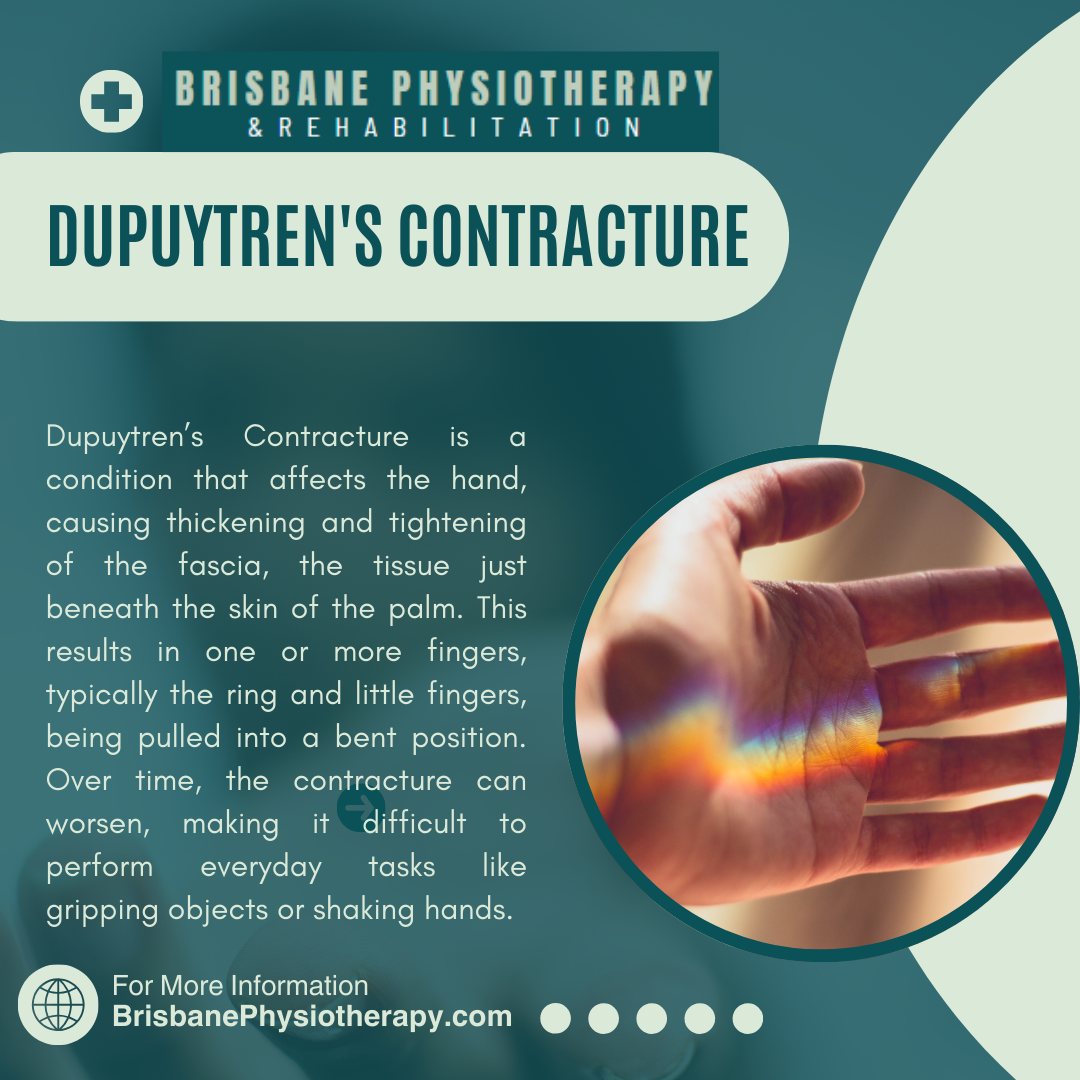What is Dupuytren's Contracture?
Dupuytren's Contracture: Symptoms, Treatment, and Physiotherapy
Dupuytren’s Contracture is a condition that affects the hand, causing thickening and tightening of the fascia, the tissue just beneath the skin of the palm. This results in one or more fingers, typically the ring and little fingers, being pulled into a bent position. Over time, the contracture can worsen, making it difficult to perform everyday tasks like gripping objects or shaking hands. At Brisbane Physiotherapy, we understand how limiting Dupuytren’s Contracture can be and offer treatments that focus on improving hand function and mobility.
Causes of Dupuytren’s Contracture
The exact cause of Dupuytren’s Contracture is not well understood, but it is believed to have a genetic component. It tends to run in families and is more common in men over the age of 50, especially those of Northern European descent. Other risk factors include:
Diabetes
Excessive alcohol consumption
Smoking
Manual labor jobs that involve frequent use of the hands
Unlike many other conditions that affect the joints and tendons, Dupuytren’s Contracture does not usually result from overuse or injury.
Symptoms of Dupuytren’s Contracture
The progression of Dupuytren’s Contracture is generally slow. It often starts with a small nodule or lump in the palm, which can initially be tender but typically becomes painless over time. As the condition advances, thick cords of tissue develop under the skin, pulling one or more fingers into a bent position.
Common symptoms include:
Lumps or nodules in the palm
Tightening of the fascia, leading to restricted finger movement
Bent fingers that cannot be fully straightened
Difficulty with daily tasks, such as gripping, holding, or shaking hands
Physiotherapy for Dupuytren’s Contracture
While Dupuytren’s Contracture cannot be reversed without medical intervention, physiotherapy can help manage symptoms, slow progression, and improve hand function. In cases where medical procedures such as needle aponeurotomy or collagenase injections are performed to release the contracted tissue, physiotherapy plays a vital role in recovery.
Stretching Exercises: Gentle stretching can help maintain the range of motion in the fingers and prevent further stiffness.
Strengthening Exercises: Strengthening the hand and forearm muscles can improve grip strength and enhance functional hand use.
Scar Management: After surgical intervention, physiotherapy can reduce scar tissue formation, aiding in the recovery of full hand movement.
Splinting: A custom-made splint can be used to keep the fingers extended and prevent further contracture, particularly at night when the hand is at rest.
Conclusion
Dupuytren’s Contracture can be a frustrating condition, limiting hand function and affecting everyday tasks. At Brisbane Physiotherapy, we offer personalised treatment plans that focus on improving mobility, strength, and function, allowing you to maintain a more active and independent lifestyle. Early physiotherapy intervention, combined with appropriate medical treatments, can help manage the symptoms and slow the progression of this condition effectively.

